History
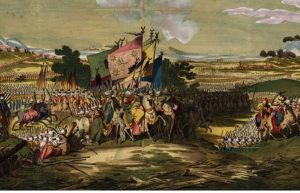 We have all made mistakes, but thankfully, most of them don’t end up costing people their lives. Nevertheless, there are few mistakes that can measure up to the Battle of Karansebes. In 1788, Austria was at war with Turkey, fighting over control of the Danube River. About 100,000 Austrian troops were camped near Karansebes, which is a village that is located in what is today Romania. Scouts were sent ahead to see if they could locate any Turkish soldiers. The scouts didn’t find any evidence of Turks, but they found gypsies…who as it turns out, had a lot of alcohol to sell, and the scouts bought it.
We have all made mistakes, but thankfully, most of them don’t end up costing people their lives. Nevertheless, there are few mistakes that can measure up to the Battle of Karansebes. In 1788, Austria was at war with Turkey, fighting over control of the Danube River. About 100,000 Austrian troops were camped near Karansebes, which is a village that is located in what is today Romania. Scouts were sent ahead to see if they could locate any Turkish soldiers. The scouts didn’t find any evidence of Turks, but they found gypsies…who as it turns out, had a lot of alcohol to sell, and the scouts bought it.
After returning to camp, with the alcohol, they started drinking, thinking that the next day they would be going into battle, so why not enjoy the evening before with a party, since the best thing to do the night before a big battle is get very, very drunk. As happens with a drunken party, the revelers got very loud and quite obnoxious. The noise attracted the attention of several foot soldiers who wanted to join in. The scouts were not interested in sharing the alcohol, and being very drunk, they weren’t careful in how that told the foot soldiers that they were not welcome.
Once the argument began, it quickly escalated into a fight. The alcohol was confiscated, more men joined in the fight, punches were thrown, and a shot rang out. In the middle of the chaos, someone shouted that the Turks had arrived. Most of the soldiers fled the scene immediately, because they were unprepared for battle. Others got into formation and charged at the supposed enemy. Shots were fired, cavalry was assembled, and the defecting soldiers were killing every man they saw without thinking. Needless to say, the Turkish army had not arrived. They wandered into Karansebes two days later and found 10,000 dead or wounded Austrian soldiers. A little confused by this turn of events, they were nonetheless delighted to take Karansebes without any effort.
If you ever feel like you’ve “made a huge mistake,” just remember…it’s probably not bigger than the Battle of Karansebes. When an army mistakes its own soldiers for the enemy, and mistakenly fights and kills 10,000 men…well, that is a huge mistake!! Some people say that the Battle of Karansebes never happened, because 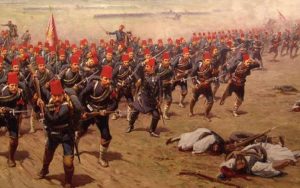 they can’t find any conclusive evidence to show that it happened. Seriously, if I were in charge of the Austrian Army, I might not want anyone to know of this mistake either. Still, those who believe in the battle said that the army could very easily have gotten confused. At the time, the Austrian army was made up of people who spoke German, Hungarian, Polish, and Czechoslovakian, among other languages. This resulted in a lot of confusion and miscommunication as many troops and officers weren’t able to understand each other. I can certainly see where that could bring the kind of confusion that could have cause the army to fight themselves, especially in a drunken state.
they can’t find any conclusive evidence to show that it happened. Seriously, if I were in charge of the Austrian Army, I might not want anyone to know of this mistake either. Still, those who believe in the battle said that the army could very easily have gotten confused. At the time, the Austrian army was made up of people who spoke German, Hungarian, Polish, and Czechoslovakian, among other languages. This resulted in a lot of confusion and miscommunication as many troops and officers weren’t able to understand each other. I can certainly see where that could bring the kind of confusion that could have cause the army to fight themselves, especially in a drunken state.
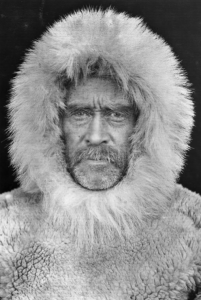
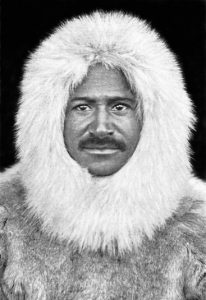 When I think of the world’s explorers, I think back to the 1500s to maybe the 1700s, but there are still explorers, and probably places that no man has ever been, and some explorations are still going on. That is most likely because some places are very difficult to reach. American explorer Robert Peary knew that all too well. Peary had a dream. He wanted to go to the North Pole. For many years one thing or another came between Peary and his dream, but finally on April 6, 1909, Peary and his assistant Matthew Henson, and four Eskimos reached what they determined to be the North Pole. I can only imagine how elated they felt. It was the journey of a lifetime for them.
When I think of the world’s explorers, I think back to the 1500s to maybe the 1700s, but there are still explorers, and probably places that no man has ever been, and some explorations are still going on. That is most likely because some places are very difficult to reach. American explorer Robert Peary knew that all too well. Peary had a dream. He wanted to go to the North Pole. For many years one thing or another came between Peary and his dream, but finally on April 6, 1909, Peary and his assistant Matthew Henson, and four Eskimos reached what they determined to be the North Pole. I can only imagine how elated they felt. It was the journey of a lifetime for them.
Peary, a US Navy civil engineer, made his first trip to the interior of Greenland in 1886. In 1891, Henson, a young African-American sailor, joined him on his second arctic expedition. Their team made an extended dogsled journey to the northeast of Greenland and explored what became known as “Peary Land.” Then, in 1893, they began working toward reaching the North Pole. In 1906, during their second attempt, they nearly reached latitude 88 degrees north, just 150 miles short of their objective. It would seem that they had the fever, because in 1908, they traveled to Ellesmere Island by ship and in 1909 raced across hundreds of miles of ice to reach what they calculated as latitude 90 degrees north on April 6, 1909. Although their achievement was widely acclaimed, Dr. Frederick A. Cook challenged their distinction of being the first to reach the North Pole. Cook, a former associate of Peary, claimed he had already reached the pole by dogsled the previous year. A major controversy followed, and in 1911 the US Congress formally recognized Peary’s claim over Cook’s.
Sadly, decades after Peary’s death, navigational errors in his travel log surfaced, placing the expedition in all probability a few miles short of its goal. I am glad he never knew. In recent years, further studies of the conflicting claims suggest that neither expedition reached the exact North Pole, but that Peary and Henson came far closer, falling perhaps just 30 miles short. On May 3, 1952, US Lieutenant Colonel Joseph O. Fletcher 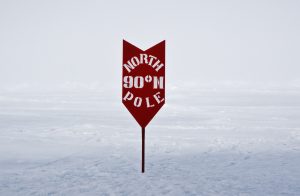
 of Oklahoma stepped out of a plane and walked to the precise location of the North Pole, the first person to undisputedly do so. While he did step on the exact location, as confirmed by GPS or whatever measurement they used to confirm the location, it is my opinion that the accomplishment of Lieutenant Colonel Fletcher was nowhere near as amazing as that of Robert Peary and his team, who forged their way to the site, rather than being dropped on it.
of Oklahoma stepped out of a plane and walked to the precise location of the North Pole, the first person to undisputedly do so. While he did step on the exact location, as confirmed by GPS or whatever measurement they used to confirm the location, it is my opinion that the accomplishment of Lieutenant Colonel Fletcher was nowhere near as amazing as that of Robert Peary and his team, who forged their way to the site, rather than being dropped on it.
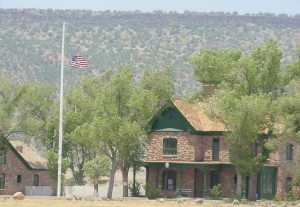
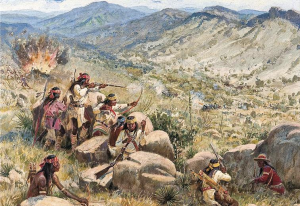 During our nation’s early years, there were many times when we found it necessary to build forts to protect the people in the area. The forts housed the armies and also took in civilians when needed. In 1870, the government built a military post four miles south of what is today, Whiteriver, Arizona. The fort was named Camp Ord, and was named after General O.C. Ord, Commander of Arizona when it was built in the spring. Just a few months later in August, the name was changed to Camp Mogollon, then Camp Thomas in September. It seems almost comical that the name would change so many times, but that was how things were done then, I guess.
During our nation’s early years, there were many times when we found it necessary to build forts to protect the people in the area. The forts housed the armies and also took in civilians when needed. In 1870, the government built a military post four miles south of what is today, Whiteriver, Arizona. The fort was named Camp Ord, and was named after General O.C. Ord, Commander of Arizona when it was built in the spring. Just a few months later in August, the name was changed to Camp Mogollon, then Camp Thomas in September. It seems almost comical that the name would change so many times, but that was how things were done then, I guess.
The post received it’s final name…Camp Apache on February 2, 1871, as a token of friendship to the Apache Indians. Ironically, the soldiers at the fort would soon spend many years at war with these same Indians they were trying to befriend. The fort’s initial purpose was to guard the nearby White Mountain Reservation and Indian agency. The fort was located at the end of a military road on the White Mountain Reservation. Right next to that was the San Carlos Agency. Both reservations would become the focus of Apache unrest, especially after troops moved the troublesome Chiricahuas from Fort Bowie to the White Mountain Reservation in 1876.
The area was in constant turmoil, mostly because the reservations were noted for their unhealthful location, overcrowded conditions, and dissatisfied inhabitants. Inefficient and corrupt agents added to the problem, and friction between civil and military authorities grew. Several attempts to turn the nomadic Indians into farmers, and an influx on the reservations of settlers and miners only added to the problem, and battles became the normal everyday event. As a result, many of the Indians left the reservations to resume their hunting, gathering, and raiding lifestyle, creating a public outcry from the settlers.
In 1871, General George Crook was named commander of the Department of Arizona. Crook had earned a reputation as an Indian fighter in the Snake War in Idaho and Oregon. Crook quickly realized that his soldiers were no match for the fierce Apache he was sent to subdue, so he made his first trip to Fort Apache. At the reservation, he recruited about fifty men to serve as Apache Scouts. These men would play a key role in the success of the Army in the Apache Wars which ensued for the next 15 years.
After recruiting the scouts, Crook prepared for his Tonto Basin campaign. Then he moved on to Camp Verde to implement his tactical operations there. During the winter of 1872-1873, Crook sent a number of mobile detachments, using Apache scouts, to crisscross the Tonto Basin and the surrounding tablelands in constant pursuit of renegade Tonto Apache and their Yavapai allies. The campaigns forcing as many as 20 skirmishes. In all some 200 Indians were killed. The battles finally began to wear down the Indians. On April 5, 1879, Camp 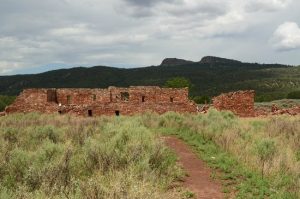
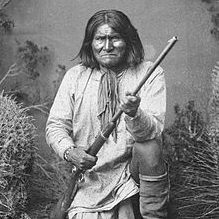 Apache had gained enough significance that it was renamed Fort Apache. The battles with the Apache continued as the soldiers fought various renegade bands that included such famous warriors as Geronimo, Natchez, Chato, and Chihuahua. It was only after Geronimo was captured for the last time in 1886, that the Apache Wars finally came to an end…and with it the need for Fort Apache. Nevertheless, it remained active until 1924. Then it was closed and the area given back to the reservation.
Apache had gained enough significance that it was renamed Fort Apache. The battles with the Apache continued as the soldiers fought various renegade bands that included such famous warriors as Geronimo, Natchez, Chato, and Chihuahua. It was only after Geronimo was captured for the last time in 1886, that the Apache Wars finally came to an end…and with it the need for Fort Apache. Nevertheless, it remained active until 1924. Then it was closed and the area given back to the reservation.
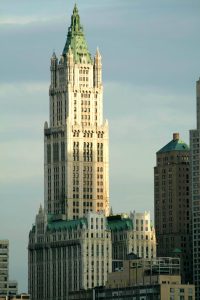 As Spring arrives, many people, including my husband Bob and I, have started thinking about the home improvement projects they want to get done. Depending on what you have in mind, it can be a few minor improvements, or it can be big projects, like room gut-jobs and remodels. Whatever it is, you can count on it being work, because no home improvement project is easy. Still, I wonder if we would consider our own home improvement projects to be a daunting a task as the one that took place on the Woolworth building in New York City.
As Spring arrives, many people, including my husband Bob and I, have started thinking about the home improvement projects they want to get done. Depending on what you have in mind, it can be a few minor improvements, or it can be big projects, like room gut-jobs and remodels. Whatever it is, you can count on it being work, because no home improvement project is easy. Still, I wonder if we would consider our own home improvement projects to be a daunting a task as the one that took place on the Woolworth building in New York City.
Retailer Frank W. Woolworth commissioned the building in 1910, which he would name 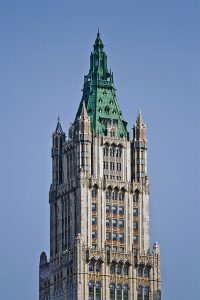 after himself. This was just a year after the Metropolitan Life Insurance Company moved into their 700-foot tower on Madison Square, just a block away from the triangle-shaped Flatiron Building. The Metropolitan Life Tower had become the world’s tallest building at that time, having taken over that title from the New York headquarters of the Singer Sewing Machine Company, completed in 1908. Of course, as buildings go and builders follow, the latest “tallest building in the world” is nothing more than a challenge to see who will build the next building to beat the record set by the last building in the category.
after himself. This was just a year after the Metropolitan Life Insurance Company moved into their 700-foot tower on Madison Square, just a block away from the triangle-shaped Flatiron Building. The Metropolitan Life Tower had become the world’s tallest building at that time, having taken over that title from the New York headquarters of the Singer Sewing Machine Company, completed in 1908. Of course, as buildings go and builders follow, the latest “tallest building in the world” is nothing more than a challenge to see who will build the next building to beat the record set by the last building in the category.
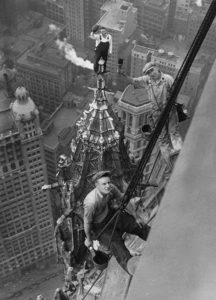
Building a super structure is difficult enough, to be sure, but what about when such a structure need something like, a outside paint job. The reality is that it was going to take some great painters…who were very brave, and hopefully, not afraid of heights. This was no ordinary job. Now, I love hiking, and I have been to the top of a few mountains peaks, but I still don’t like being at the edge of a cliff. I have no desire to stand at the edge of a cliff and look down to see how far away it is. That makes me squeamish. Nevertheless, the brave men chosen to paint the top of the Woolworth building years ago, had to have stomachs made of cast iron, and nerves of steel. They not only went up there and painted the building, but they even found time to prove their bravery in pictures while they were there. I don’t know how OSHA would feel about the stunts they performed, but perform they did, nevertheless.
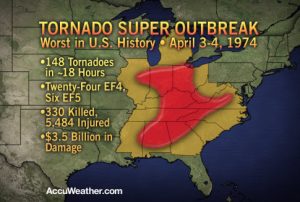 We all know that tornadoes are possible just about anywhere in the world…but in the United States, in an area well known as Tornado Alley, tornadoes are a common thing during tornado season, and sometimes outside of tornado season. Tornado Alley gets an average of more than 1,000 tornadoes a year, but on April 3, 1974, a super outbreak began. Over a less than 18 hour span, 148 tornadoes touched down across 13 states, with 21 in Indiana. The tornadoes hit North America from Georgia to Canada within 16 hours. At times there were as many as 15 separate tornadoes on the ground at one time. The Super Outbreak affected a total of 11 US states and Ontario in Canada. The Monticello tornado, which occurred during the weather event, tracked a whopping 121 miles, he longest tornado track in Indiana history! The 1974 tornado outbreak held the record as the largest outbreak in US history, killing 330 people…until the 2011 tornado outbreak, during which 360 tornadoes touched down killing 337 people.
We all know that tornadoes are possible just about anywhere in the world…but in the United States, in an area well known as Tornado Alley, tornadoes are a common thing during tornado season, and sometimes outside of tornado season. Tornado Alley gets an average of more than 1,000 tornadoes a year, but on April 3, 1974, a super outbreak began. Over a less than 18 hour span, 148 tornadoes touched down across 13 states, with 21 in Indiana. The tornadoes hit North America from Georgia to Canada within 16 hours. At times there were as many as 15 separate tornadoes on the ground at one time. The Super Outbreak affected a total of 11 US states and Ontario in Canada. The Monticello tornado, which occurred during the weather event, tracked a whopping 121 miles, he longest tornado track in Indiana history! The 1974 tornado outbreak held the record as the largest outbreak in US history, killing 330 people…until the 2011 tornado outbreak, during which 360 tornadoes touched down killing 337 people.
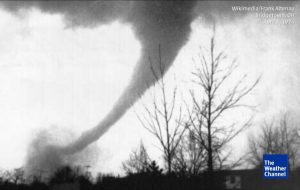
The outbreak began when a powerful low pressure system developed on April 1st, across the North American Interior Plains. As it moved into the Mississippi and Ohio Valley areas, a surge of very humid air intensified the storm further, and there were sharp temperature differences between both sides of the system. The National Weather Service began forecasting a severe weather outbreak on April 3, but no one expected the severity of the outbreak that actually occurred. Several F2 and F3 tornadoes struck portions of the Ohio Valley and the South in a separate, earlier outbreak on April 1 and 2, which included three killer tornadoes in Kentucky, Alabama, and Tennessee. The town of Campbellsburg, northeast of Louisville, was hard-hit in this earlier outbreak, with a large portion of the town destroyed by an F3. Between the two outbreaks, an additional tornado was reported in Indiana in the early morning hours of April 3, several hours before the official start of the outbreak. On Wednesday, April 3, severe weather watches already were issued from the morning from south of the Great Lakes, while in portions of the Upper Midwest, snow was reported, with heavy rain falling 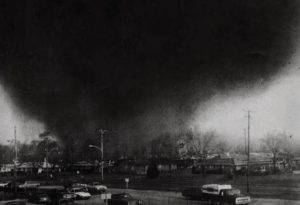 across central Michigan and much of Ontario, which also had tornadoes.
across central Michigan and much of Ontario, which also had tornadoes.
Perhaps the most shocking fact from the 1974 outbreak was the amount of F4 and F5 tornadoes…with an incredible 30 (23 F4s and 7 F5s). The 1974 outbreak featured 30 violent tornadoes in less than one day when the national average is only about 7 per year. All seven of the F5 tornadoes occurred on the 3rd, and Alabama was the state that experienced the highest number of F5 tornadoes that day…three out of seven. The other F5 tornadoes occurred throughout Kentucky, Indiana, and Ohio. these super outbreaks are some of the most shocking weather phenomena ever.
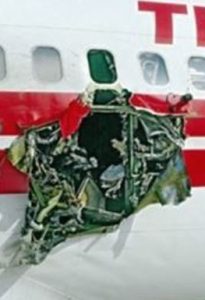 For a time, bombs or bomb threats seemed to be the weapon of choice for terrorists and hijackers on the worlds airlines. With better screenings and luggage checks, things have improved and we see fewer incidences like these, but that in no way means that we should ever let our guard down, because evil exists in this world, and awareness of that fact saves lives. On April 2, 1986, we weren’t quite as prepared as we are today. On that day, Trans World Airlines Flight 840 was on a regularly scheduled flight from Los Angeles to Cairo via New York City, Rome, and Athens. The plane was flying at 11,000 feet over Greece, on its way to Athens, when the bomb went off. Four people, including an eight-month old baby, were sucked out of a TWA passenger jet after an explosion ripped a hole in its side.
For a time, bombs or bomb threats seemed to be the weapon of choice for terrorists and hijackers on the worlds airlines. With better screenings and luggage checks, things have improved and we see fewer incidences like these, but that in no way means that we should ever let our guard down, because evil exists in this world, and awareness of that fact saves lives. On April 2, 1986, we weren’t quite as prepared as we are today. On that day, Trans World Airlines Flight 840 was on a regularly scheduled flight from Los Angeles to Cairo via New York City, Rome, and Athens. The plane was flying at 11,000 feet over Greece, on its way to Athens, when the bomb went off. Four people, including an eight-month old baby, were sucked out of a TWA passenger jet after an explosion ripped a hole in its side.
It blew a hole six feet by three feet wide under a window in front of the starboard wing. It is believed the explosion happened at floor level in the passenger compartment itself. The four bodies of the victims were retrieved from a site 87 miles southwest of Athens. Three were from the same Greek-American family, believed to have been a grandmother, her daughter and her granddaughter. Police also found the body of a male passenger identified as a Colombian-born American, sucked out of the plane still in his seat. Remarkably, the remaining 118 passengers and crew survived, including Christian author, Jeanette Chaffee, who has written about this and other incredible situations, called “Extravagant Graces,” a book I think I will have to read. The pilot, Captain Richard Petersen, made an emergency landing, telling Athens control tower that the pressurization in the cabin was failing.
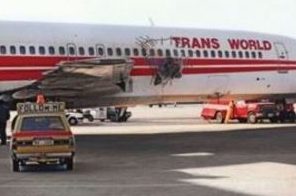
The pilot, Captain Richard Petersen, made an emergency landing, telling Athens control tower that the pressurization in the cabin was failing. He is being hailed as a hero. “We are proud of him,” said a TWA source. Just seven passengers were taken to hospital, and only three were kept in for treatment. One was Ibrahim al-Nami, from Saudi Arabia, who said he had been sitting next to the man who was sucked out with his seat. “We heard a big bang outside the window,” he said,” and then I saw the man next to me disappear and I felt myself being pulled out.” He avoided sharing the same fate by clinging on to his wife’s seat. Another passenger escaped because she left her seat only minutes earlier to go to the lavatory. Florentia Haniotakis, a Greek-American from Ohio, praised the crew. She says they comforted passengers to calm them during the emergency landing.
The airliner was on the same Rome-Cairo route as a similar TWA plane hijacked by Shia Muslim gunmen in June 1985 after leaving Athens for Rome. The investigation found that the bomb had been planted under seat number 10F, probably inside a lifejacket. A group calling itself the Ezzedine Kassam Unit of the Arab Revolutionary Cells claimed responsibility, and said the bombing was in retaliation for US bombing raids against 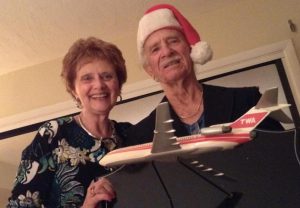 Libya the previous month. Police initially suspected a Lebanon-born Palestinian woman named Mai Elias Mansur. Mansur was a suspected terrorist connected with the Abu Nidal extremist group, who was involved in an abortive attempt to bomb a Pan American airliner in 1983. She had travelled in seat 10F on an earlier flight of the same Boeing 727. Mansur denied any involvement. After a two year investigation, the US State Department said it believed that she had carried out the bombing, operating on the orders of known Palestinian terrorist Colonel Hawari, but they were unable to definitively prove it. Therefore, nobody has ever been convicted of carrying out the bombing. TWA filed for bankruptcy in 2001 and was taken over by American Airlines.
Libya the previous month. Police initially suspected a Lebanon-born Palestinian woman named Mai Elias Mansur. Mansur was a suspected terrorist connected with the Abu Nidal extremist group, who was involved in an abortive attempt to bomb a Pan American airliner in 1983. She had travelled in seat 10F on an earlier flight of the same Boeing 727. Mansur denied any involvement. After a two year investigation, the US State Department said it believed that she had carried out the bombing, operating on the orders of known Palestinian terrorist Colonel Hawari, but they were unable to definitively prove it. Therefore, nobody has ever been convicted of carrying out the bombing. TWA filed for bankruptcy in 2001 and was taken over by American Airlines.
 Imagine thinking that things that have no substance, actually do have substance. I know that sounds odd, but consider our shadow. It is caused by our body coming between the sun and the ground. We have all seen them, and most of us give them no thought at all. Now consider a two year old girl, who notices her shadow for the first time. Suddenly, something strange is following her and she cannot get away from it. Many of this little ones actually become quite upset, and telling them it is ok, or it is only their shadow doesn’t help at all. Explaining what creates a shadow to a two year old doesn’t help either, because they are too young to figure out what you are saying. To them, the
Imagine thinking that things that have no substance, actually do have substance. I know that sounds odd, but consider our shadow. It is caused by our body coming between the sun and the ground. We have all seen them, and most of us give them no thought at all. Now consider a two year old girl, who notices her shadow for the first time. Suddenly, something strange is following her and she cannot get away from it. Many of this little ones actually become quite upset, and telling them it is ok, or it is only their shadow doesn’t help at all. Explaining what creates a shadow to a two year old doesn’t help either, because they are too young to figure out what you are saying. To them, the 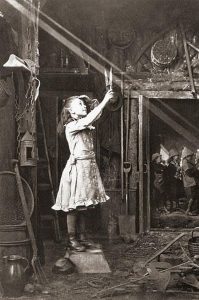 shadow is a thing of substance…a stranger, and the child does not like it. While a little child being afraid of their shadow is pretty normal, what of other things that have no substance being mistaken for things of substance.
shadow is a thing of substance…a stranger, and the child does not like it. While a little child being afraid of their shadow is pretty normal, what of other things that have no substance being mistaken for things of substance.
In reality, it is probably just people being able to use their imagination, like the little girl who was the subject of a photograph taken by Adam Diston in 1886. Little is known about the photographer himself, but his imagination and creative thought are fascinating to me. I did find out he was born 1827 in Edinburgh and spent the greater majority of his life as a photographer. I don’t know if the little girl thought you could 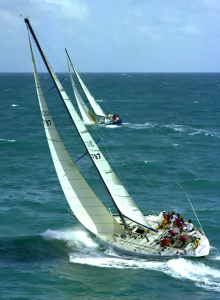 cut a sunbeam or not, but maybe…just for a moment it seemed possible that something without substance, could have substance. Diston brought that out in her, and in his picture, made it almost believable. I think he might have been a truly great photographer.
cut a sunbeam or not, but maybe…just for a moment it seemed possible that something without substance, could have substance. Diston brought that out in her, and in his picture, made it almost believable. I think he might have been a truly great photographer.
And what of the wind? Wind can blow all around you and still you stand in the same place, and yet, if you raise your jacket over your head, it can fill the fabric and take you for a little ride. We can’t go far on just jacket power, but put that same wind in a sail, connected to a boat and you can travel the world. And yet, a breeze goes by almost unnoticed…because it has no real substance…at least not until we harness it. Or in the case of a sunbeam, we imagine it’s substance. And in the case of the shadow, we envision it as a person…a stranger. It’s all in how we see things.
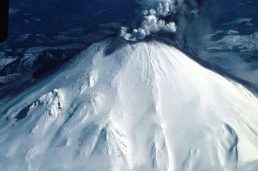
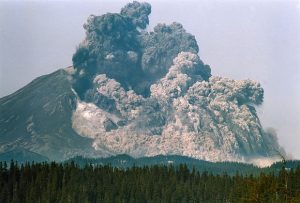 Most people who were alive in 1980, remember the catastrophic eruption of Mount Saint Helens on May 18th, but I wonder how many people…at least people who didn’t live in Washington state at that time…remember the earlier eruption that took place on March 29th. Volcanic eruptions don’t usually bring loss of life these days, because there are so many warning signs. That is what made the 57 lives lost to the Mount Saint Helens blast on May 18th so devastating. The warnings were there. The people were told, but the ones who lost their lives chose to stay in the area anyway, despite the glaring changes in the mountain and the urgent warnings to stay away. We had all heard that there was a distinct possibility that the mountain was going to blow. It was not just the people in Washington who were warned, but all across the nation too. I vividly remember being told what to expect when the mountain blew, because they knew the ash would encircle the entire Earth before it was all said and done.
Most people who were alive in 1980, remember the catastrophic eruption of Mount Saint Helens on May 18th, but I wonder how many people…at least people who didn’t live in Washington state at that time…remember the earlier eruption that took place on March 29th. Volcanic eruptions don’t usually bring loss of life these days, because there are so many warning signs. That is what made the 57 lives lost to the Mount Saint Helens blast on May 18th so devastating. The warnings were there. The people were told, but the ones who lost their lives chose to stay in the area anyway, despite the glaring changes in the mountain and the urgent warnings to stay away. We had all heard that there was a distinct possibility that the mountain was going to blow. It was not just the people in Washington who were warned, but all across the nation too. I vividly remember being told what to expect when the mountain blew, because they knew the ash would encircle the entire Earth before it was all said and done.
For a week, prior to March 29th, the area had been hit with small earthquakes below the mountain. These earthquakes were an indication that magma had begun to move below the volcano. On March 20, at 3:45pm Pacific Standard Time, a shallow magnitude 4.2 earthquake centered below the volcano’s north flank, signaled the volcano’s violent return from 123 years of hibernation. Over the 20th and 21st, 174 earthquakes of 2.6 or greater hit the area. At 12:36pm on March 27th, phreatic eruptions (explosions of steam caused by magma 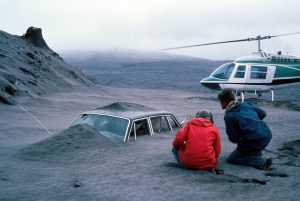
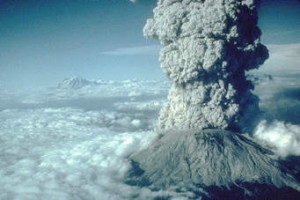 suddenly heating groundwater) ejected and smashed rock from within the old summit crater, opening a new crater 250 feet wide, and sending an ash column about 7,000 feet into the air. On March 29th, an eruption of Mount Saint Helens blasted a mushroom cloud over most of the state of Washington. Then on May 18, 1980, came the catastrophic blast that took the lives of those who had stayed, even with the many warning signs, and public warnings.
suddenly heating groundwater) ejected and smashed rock from within the old summit crater, opening a new crater 250 feet wide, and sending an ash column about 7,000 feet into the air. On March 29th, an eruption of Mount Saint Helens blasted a mushroom cloud over most of the state of Washington. Then on May 18, 1980, came the catastrophic blast that took the lives of those who had stayed, even with the many warning signs, and public warnings.
I understand the rights of people to make their own decisions concerning their safety, but when warnings are given, the choices people make need to be taken into account before allowing any lawsuits to take place. Of course, as with any kind of disaster, people want someone to blame for the pain they are feeling over the loss of their loved ones. In this case it appears that the safe zone might have been miscalculated, but it is my belief that we are also responsible for our own safety. I remember thinking that I didn’t want to be anywhere near that mountain in those days. Of the 57 people killed, the Weyerhaeuser Company and representatives of 14 victims of the Mount Saint Helens’ 1980 eruption filed lawsuits. The plaintiffs alleged in a King County Superior Court suit that Weyerhaeuser misrepresented the danger posed by the volcano and misled loggers and others into believing it was safe to be near the peak. Maybe they did, but the trial ended in a hung jury. They could not agree either. To me it seems as if this blast was nothing like the normal eruptions people knew about. In the end, the plaintiffs settled out of court for a reported $225,000, but the forest products company still denies 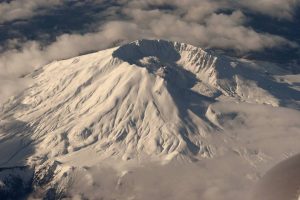
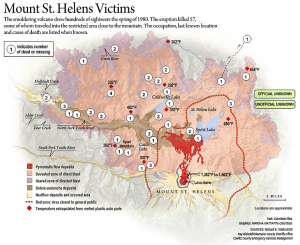 liability. I don’t claim to know whether or not these 14 victims were wronged or if they simply didn’t take their own safety into account when they went too near the action. I do know that at the time, it made no sense to me to be anywhere near a mountain that was so filled with pressure that it was bulging. I thought that was a warning in itself. I remember the public warnings about the mountain. It simply made no sense to take the chance.
liability. I don’t claim to know whether or not these 14 victims were wronged or if they simply didn’t take their own safety into account when they went too near the action. I do know that at the time, it made no sense to me to be anywhere near a mountain that was so filled with pressure that it was bulging. I thought that was a warning in itself. I remember the public warnings about the mountain. It simply made no sense to take the chance.
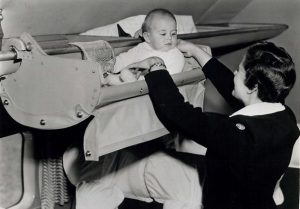 Air travel has changed a lot over the years, especially where babies are concerned. These days babies are placed in car seats just like they are when traveling in cars, but in years past, that was not the case. Of course, the invention of the car seat has saved countless lives in car and air travel. Nevertheless, years ago people didn’t have car seats. In those days babies were often held on their parents laps, but even that wasn’t as odd as the way babies traveled in the mid-1950s.
Air travel has changed a lot over the years, especially where babies are concerned. These days babies are placed in car seats just like they are when traveling in cars, but in years past, that was not the case. Of course, the invention of the car seat has saved countless lives in car and air travel. Nevertheless, years ago people didn’t have car seats. In those days babies were often held on their parents laps, but even that wasn’t as odd as the way babies traveled in the mid-1950s.
It was thought that babies needed to be able to sleep on the trip, and so the 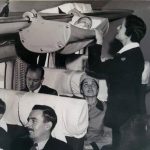 planes had a “cradle” that attached to the baggage area, and the bed folded down. Called skycots, the beds allowed the baby to lay down and maybe sleep through the flight. If you have ever traveled with a baby, you know that if they get fussy because of things like ear pressure from being so high, it is going to be miserable for everyone. Air stewards were actually tasked with attending to the children during the flight. The babies were pretty much in the skycot for the duration of the trip. It was almost like putting your baby in the luggage bin…not something most of us would even consider these days. Parents were required to hold their baby during take-off and landing, of course,
planes had a “cradle” that attached to the baggage area, and the bed folded down. Called skycots, the beds allowed the baby to lay down and maybe sleep through the flight. If you have ever traveled with a baby, you know that if they get fussy because of things like ear pressure from being so high, it is going to be miserable for everyone. Air stewards were actually tasked with attending to the children during the flight. The babies were pretty much in the skycot for the duration of the trip. It was almost like putting your baby in the luggage bin…not something most of us would even consider these days. Parents were required to hold their baby during take-off and landing, of course, 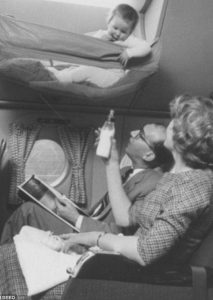 because the babies were not buckled into the skycots. I don’t suppose they would have liked it if they were, but there really wasn’t a way to do that anyway, so they were just placed in the sky cot like a cradle or crib. To me it also seems an odd way to do things, because what of the baby who could sit up or climb over the side? The whole thing would make the average parent worry, but in those days it was just the way it was…just like having your kids in the car unbuckled…which was completely normal when I was a kid.
because the babies were not buckled into the skycots. I don’t suppose they would have liked it if they were, but there really wasn’t a way to do that anyway, so they were just placed in the sky cot like a cradle or crib. To me it also seems an odd way to do things, because what of the baby who could sit up or climb over the side? The whole thing would make the average parent worry, but in those days it was just the way it was…just like having your kids in the car unbuckled…which was completely normal when I was a kid.
While pictures seemed to show the happy babies relaxing in their sky cot, the reality is that planes in the 50s were noisy, and turbulent. My guess is that the pictures taken before takeoff, were not exactly how the flights went. In addition, many babies are not too keen on the idea of some stranger taking care of them on the plane, especially since they can’t always see their parents. Parents gave their babies a bottle of milk in an effort to appease them and lull them to sleep. I wonder just how well that worked.
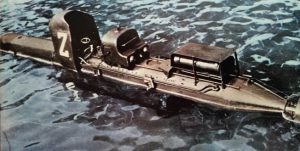 One of the weapons of naval warfare that all of us know about is the torpedo. Beginning in the 1870’s, torpedoes were rapidly introduced into the navies of many states and soon became the primary weapon of destroyers, submarines, and torpedo boats, cruisers, and ships of the line of that period were also armed with torpedoes. Torpedoes were first used by Russian vessels in the Russo-Turkish War of 1877–78. So torpedoes weren’t new on March 26, 1941, when Italy attacked the British fleet at Souda Bay, Crete, using these new detachable warheads. These torpedoes were different however, and I can only imagine how the men on the deck of the British cruiser must have felt as they watched the streaking torpedo coming toward them.
One of the weapons of naval warfare that all of us know about is the torpedo. Beginning in the 1870’s, torpedoes were rapidly introduced into the navies of many states and soon became the primary weapon of destroyers, submarines, and torpedo boats, cruisers, and ships of the line of that period were also armed with torpedoes. Torpedoes were first used by Russian vessels in the Russo-Turkish War of 1877–78. So torpedoes weren’t new on March 26, 1941, when Italy attacked the British fleet at Souda Bay, Crete, using these new detachable warheads. These torpedoes were different however, and I can only imagine how the men on the deck of the British cruiser must have felt as they watched the streaking torpedo coming toward them.
The difference between the torpedoes of old, and these new torpedoes, was that these were manned torpedoes. No, there weren’t men on the torpedo known as the Chariot.” Nevertheless it was unique. Primarily used to attack enemy ships still in harbor, the Chariots needed “pilots” to “drive” them to their targets…basically a guided missile system…but in a very primitive form. Sitting astride the torpedo on a vehicle that 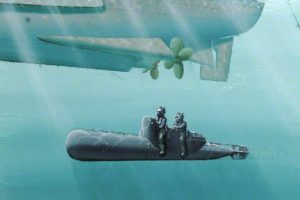 would transport them both, the pilot would guide the missile as close to the target as possible, then ride the vehicle back, usually to a submarine. The Chariot was an enormous advantage, because before its development, the closest weapon to the Chariot was the Japanese Kaiten–a human torpedo, or suicide bomb, which had obvious drawbacks. I can’t imagine being ordered to pilot that one, but then the Japanese were known for their suicide attacks.
would transport them both, the pilot would guide the missile as close to the target as possible, then ride the vehicle back, usually to a submarine. The Chariot was an enormous advantage, because before its development, the closest weapon to the Chariot was the Japanese Kaiten–a human torpedo, or suicide bomb, which had obvious drawbacks. I can’t imagine being ordered to pilot that one, but then the Japanese were known for their suicide attacks.
The Italian attack was just the first successful use of the Chariot, or any other manned torpedo, although they referred to their version as Maiali, or “Pigs.” On that March day, six Italian motorboats, commanded by Italian naval commander Lieutenant Luigi Faggioni, entered Souda Bay in Crete and planted their Maiali along a British convoy in harbor there. The British cruiser, York was so badly damaged that it had to be beached. The manned torpedo system proved to be the most effective weapon in the Italian naval arsenal, and it was used successfully against the British again in December 1941 at Alexandria, Egypt. Italian torpedoes sank the British battleships Queen Elizabeth and Valiant, as well as one tanker. They were also used against merchant ships at  Gibraltar and elsewhere.
Gibraltar and elsewhere.
Deeply angered, the British avenged themselves against the Italians, by sinking the new Italian cruiser Ulpio Traiano in the port of Palermo, Sicily, in early January 1943. An 8,500-ton ocean liner was also damaged in the same attack. After the Italian surrender, the use of the manned torpedo continued to be used by both the British, and later the Germans. In fact, Germany succeeded in sinking two British minesweepers off Normandy Beach in July 1944, using their “Neger” torpedoes. These would be the best torpedo, until the guidance systems could be invented.

